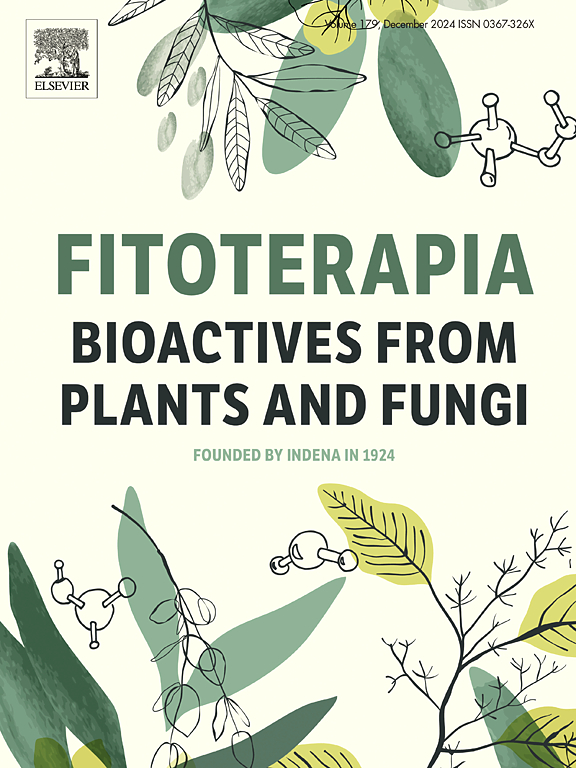薰衣草挥发油乳膏治疗慢性前列腺炎的药理学评价和配方设计:疗效机理的见解。
IF 2.6
3区 医学
Q3 CHEMISTRY, MEDICINAL
引用次数: 0
摘要
本研究通过单因素实验和响应面法对薰衣草挥发油乳膏(LVOC)的配方进行了优化,并考察了乳化剂、油相组分和保湿剂对乳膏物理性能的影响。优化后的配方为:2.00 %薰衣草挥发油、6.00 %液体石蜡、7.57 %十八醇、10.00 %凡士林、4.89 %甘油、1.34 %十二烷基硫酸钠。所制得的面霜质地均匀,稳定性好,有效成分含量稳定。理化性质分析表明,该乳霜粒径适宜(680.40 nm),多分散系数(PDI)低(0.15),pH值(5.97)符合皮肤使用标准,流变学性能具有优异的机械稳定性。此外,体外保留实验证实,LVOC可以显著减少挥发油的损失(p本文章由计算机程序翻译,如有差异,请以英文原文为准。

Pharmacological evaluation and formulation design of lavender volatile oil cream for the treatment of chronic prostatitis: Mechanistic insights into therapeutic efficacy
This study optimized the formulation of lavender volatile oil cream (LVOC) through single factor experiments and response surface methodology, and investigated the effects of emulsifiers, oil phase components, and moisturizers on the physical properties of the cream. The optimized formula contains 2.00 % lavender volatile oil, 6.00 % liquid paraffin, 7.57 % octadecanol, 10.00 % Vaseline, 4.89 % glycerol, and 1.34 % sodium dodecyl sulfate. The resulting cream has a uniform texture, good stability, and stable active ingredient content. Physical and chemical property analysis shows that the cream has a suitable particle size (680.40 nm) and low polydispersity coefficient (PDI) (0.15), a pH (5.97) that meets the standards for skin application, and excellent mechanical stability in rheological properties. In addition, retention experiments have confirmed that LVOC can significantly reduce the loss of volatile oil (p < 0.01). In the chronic prostatitis (CP) rat model, LVOC significantly reduced the inflammatory response by downregulating the expression of cyclooxygenase-2 (COX2), phosphorylated protein kinase B (p-AKT), phosphorylated nuclear factor kappa B p65 subunit (p-p65), and phosphorylated phosphatidylinositol 3-kinase (p-PI3K) proteins. Molecular docking analysis further revealed that the main active ingredients of LVOC, such as linalool and linalool acetate, may exert therapeutic effects through the PI3K-AKT/Nuclear Factor Kappa B (NF-κB) signaling pathway. This study provides a scientific basis for the development of LVOC formulations and verifies its potential application value in CP treatment.
求助全文
通过发布文献求助,成功后即可免费获取论文全文。
去求助
来源期刊

Fitoterapia
医学-药学
CiteScore
5.80
自引率
2.90%
发文量
198
审稿时长
1.5 months
期刊介绍:
Fitoterapia is a Journal dedicated to medicinal plants and to bioactive natural products of plant origin. It publishes original contributions in seven major areas:
1. Characterization of active ingredients of medicinal plants
2. Development of standardization method for bioactive plant extracts and natural products
3. Identification of bioactivity in plant extracts
4. Identification of targets and mechanism of activity of plant extracts
5. Production and genomic characterization of medicinal plants biomass
6. Chemistry and biochemistry of bioactive natural products of plant origin
7. Critical reviews of the historical, clinical and legal status of medicinal plants, and accounts on topical issues.
 求助内容:
求助内容: 应助结果提醒方式:
应助结果提醒方式:


